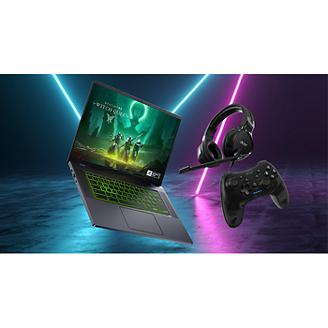-
Workshop Upgrades and Where to Get Upgrade Items in ARC Raiders
Upgrading the Workshop in ARC Raiders is the core of your long-term progression. Every station in the Raider Den unlocks new weapons, mods, grenades, medical tools, and utility items, and each can be upgraded to Level 3. However, most guides make one major mistake: they tell you to start with the Gunsmith or Medical Lab.
The truth is that the Refiner should always be upgraded to level 2 first.
The Refiner is the backbone of the entire system because it allows you to convert basic materials into rare components. Items such as Mechanical Components, Electrical Components, Crude Explosives, Advanced Components, and even ARC Circuitry can all be crafted through the Refiner as soon as the station is leveled up. This removes the early-game bottleneck where players are forced to hunt for random loot spawns or hope for lucky drops.
Once the Refiner is upgraded, every other Workshop station becomes dramatically easier to progress. The Gunsmith, Gear Bench, Medical Lab, Explosives Station, and Utility Station all require items that can be crafted directly from Refiner recipes. This means fewer farming runs, fewer dead maps, and a much smoother progression curve.
This guide covers every station, every upgrade level, and every required item. All locations and item sources have been verified and corrected to avoid the misinformation that appears in many early guides.
Refiner Station: Requirements, Unlocks, and How to Get Every Item
The Refiner is the most important early upgrade in the Workshop. Once it reaches level 2, it can produce many of the rare components required for every other station. This is why upgrading the Refiner first will save you significant time and reduce the amount of random scavenging you need to do.
Refiner Upgrade Requirements and Unlocks
Level
Materials Needed
Unlocks
1
60 Metal Parts, 5 ARC Powercells
Crude Explosives, Electrical Components, Mechanical Components
2
3 Toasters, 8 Fireball Burners, 5 ARC Motion Cores
Advanced Components, Gun Parts, ARC Circuitry
3
3 Motors, 6 Bombardier Cells, 10 ARC Circuitry
Power Rods, Mod Components
How to get all required materials
Metal Parts
Very common and found in nearly every industrial interior. Search garages, tool rooms, storage shelves, and mechanical work areas. Scrappy can also gather them.
ARC Powercell
Dropped by every ARC unit. Any robot you destroy can drop a Powercell. High density ARC areas naturally yield the most.
Toaster
Found reliably in residential and apartment interiors. Pattern House on the Dam Battlegrounds map is one of the best places to farm them. Search refrigerators, kitchen shelves, cabinets, and small kitchen storage areas.
Fireball Burner
Dropped by Fireball enemies. These appear most often
* inside buildings in Buried City
* occasionally in interior rooms in Dam Battlegrounds and Spaceport
Fireballs roll quickly and try to ignite you at close range, so take them out before they close the distance and loot their husk.
ARC Motion Core
Found on larger ARC units and inside ARC Probes and ARC Couriers.
Motor
A rarer industrial item. Found most reliably in large industrial buildings such as the Primary Facility on Dam Battlegrounds. Look on shelves, in storage containers, and inside mechanical workshops. Can also be found underneath the hood of random cars.
Bombardier Cell
Dropped by Bombardiers. Consistent places to find Bombardiers include
* Water Treatment to Loading Bay on Dam Battlegrounds
* Marana Park, Santa Maria Houses, and Plaza Rosa in Buried City
ARC Circuitry
Dropped by many ARC enemies, especially mid tier and heavy units such as Surveyors, Rocketeers, and Bombardiers. Once the Refiner reaches Level 2, it becomes craftable, which makes farming much easier.
Gunsmith Station: Requirements, Unlocks, and How to Get Every Item
The Gunsmith is one of the most valuable stations in the Workshop because it unlocks new weapons, higher-tier attachments, and late-game firepower. However, upgrading the Gunsmith becomes much easier once the Refiner is already leveled, since several required components can be crafted directly at the Refiner.
Gunsmith upgrade requirements and unlocks
Level
Materials needed
Unlocks
1
30 Rubber Parts, 20 Metal Parts
Basic weapons and early attachments
2
3 Rusted Tools, 5 Mechanical Components, 8 Wasp Drivers
Expanded weapon roster and improved attachment options
3
3 Rusted Gear, 5 Advanced Mechanical Components, 4 Sentinel Firing Cores
Elite weapons, tier 3 attachments, and top tier performance mods
How to get all required materials
Rubber Parts
Very common. Found in many residential and industrial interiors. You can also obtain Rubber Parts by recycling household items, buying from Celeste when available, or from Scrappy.
Metal Parts
Widespread in mechanical, garage, factory, and storage areas. Any industrial zone is likely to have some. Scrappy also collects them over time.
Rusted Tools
Found inside toolboxes, garages, construction interiors, and mechanical workshops. Dam Battlegrounds has the highest density of toolboxes, especially in industrial clusters. You can also find these in broken down buses.
Mechanical Components
Found in mechanical workshops and industrial interiors on every map. Dam Battlegrounds is one of the most consistent places to farm them early. You can also craft Mechanical Components once the Refiner reaches Level 1.
Wasp Driver
Dropped by Wasp ARCs. They spawn everywhere, but especially in open zones and colored danger areas. Good farming locations include:
* rooftops and elevated areas on all maps
* high alert or yellow zones
* outskirts of Buried City
Rusted Gear
A rare industrial salvage item. Found in the same locations as Motors and large mechanical scrap. Dam Battlegrounds and Spaceport are the best maps for finding Rusted Gear. Check heavy machinery rooms, industrial shelves, and equipment storage. Like, rusted tools, you can also find them in broken down buses, but at a lower appearance rate.
Advanced Mechanical Components
Dropped by mid and high tier ARCs. Good sources include
* Bombardiers
* Surveyors
* Bastions
You can also craft Advanced Mechanical Components once the Refiner reaches Level 2.
Sentinel Firing Core
Dropped by Sentinel turrets. They appear most often on rooftops, elevated ledges, and long-range vantage points. Consistent farming spots include:
* Research and Administration building in Dam Battlegrounds
* rooftops in Buried City
* high elevation perches overlooking chokepoints
Medical Lab Station: Requirements, Unlocks, and How to Get Every Item
The Medical Lab unlocks healing items, restoratives, and advanced medical tools. Higher levels give access to stronger healing options and faster recovery tools.
Medical Lab upgrade requirements and unlocks
Level
Materials needed
Unlocks
1
6 ARC Alloy, 50 Fabric
Basic medical items and early healing tools
2
8 Tick Pods, 2 Cracked Bioscanners, 5 Durable Cloth
Advanced healing recipes
3
5 Surveyor Vaults, 3 Rusted Shut Medical Kits, 8 Antiseptic
Instant healing and high-end medical items
How to get all required materials
ARC Alloy
Dropped by nearly every ARC unit. Any robot you destroy has a chance to drop Alloy. Farming high-density ARC areas will naturally build up large amounts.
Fabric
Common in residential interiors, clothing areas, offices, and abandoned apartments. Scrappy also gathers Fabric once upgraded.
Tick Pod
Dropped by Tick enemies. They usually appear in
* abandoned indoor structures
* basements and underground spaces
* dark corners of buildings in Buried City
* yellow and red high-risk enemy zones
Ticks cling to walls and ceilings, so check your surroundings and listen carefully for ticking sounds.
Cracked Bioscanner
Found inside medical buildings, especially
* the Hospital in Buried City
* clinic rooms on all maps
* medical storage areas and treatment rooms
Look at hospital beds, metal trays, and medical carts.
Durable Cloth
Created by refining Fabric at the Refiner or found rarely in residential interiors.
Surveyor Vault
Dropped by Surveyors. These large rolling ARCs are most common in
* swamp regions on Dam Battlegrounds
* flat open roads
* scattered high-risk patrol paths in Buried City and Bluegate
Surveyors emit a tall blue scanning beam that makes them easy to spot.
Rusted Shut Medical Kit
Found exclusively in medical interiors. The most reliable location is the Hospital in Buried City. Search patient rooms, supply rooms, treatment floors, and cabinets.
Antiseptic
Found inside pharmacies and medical storerooms. The best location is the Pharmacy in Buried City. Antiseptic can also appear in scattered clinic rooms across other maps. You can also craft these when you get Refiner level 2
Gear Bench Station: Requirements, Unlocks, and How to Get Every Item
The Gear Bench is responsible for crafting shields and Raider augment suits. Upgrading this station unlocks stronger shields and higher tier augments that significantly improve survivability and utility.
Gear Bench upgrade requirements and unlocks
Level
Materials needed
Unlocks
1
30 Fabric, 25 Plastic Parts
Light Shield, Medium Shield, basic augments
2
5 Hornet Drivers, 3 Power Cables, 5 Electrical Components
Heavy Shield and Mk. 2 augments
3
6 Bastion Cells, 3 Industrial Batteries, 5 Advanced Electrical Components
Mk. 3 augments
How to get all required materials
Fabric
Common in residential zones, clothing shops, and abandoned apartments. Scrappy also gathers Fabric.
Plastic Parts
Found in residential and office interiors, especially kitchen areas, storage rooms, and utility closets. Refined from basic items or collected by Scrappy.
Hornet Driver
Dropped by Hornet ARCs. These appear frequently in
* red and yellow danger zones
* open rooftops and elevated areas
* mixed ARC patrol groups with Wasps
Aim for the rear thrusters to bring them down quickly.
Power Cable
Power Cables spawn in electrical and industrial facilities. The best location is the Power Generation Complex in Dam Battlegrounds. Search drawers, cable racks, maintenance benches, and control room interiors.
Electrical Components
Found in many industrial and technological interiors. You can also craft Electrical Components using basic materials once the Refiner is upgraded.
Bastion Cell
Dropped only by Bastions. They spawn consistently in
* the north side of Piazza Roma in Buried City or Hydroponic Dome Complex in Dam Battlegrounds.
* certain high-value ARC zones on all maps
* industrial or fortified patrol areas
Climb rooftops to fight them safely and use cover to block attacks.
Industrial Battery
Appears in electrical and tech-heavy interiors. These rooms often contain server racks, computer clusters, or large generators. You can also buy them from Celeste for seeds.
Advanced Electrical Components
Found in technological buildings and high-tier loot rooms in Bluegate. You can also craft these using Wires and Electrical Components once the Refiner reaches level 2.
Explosives Station: Requirements, Unlocks, and How to Get Every Item
The Explosives Station unlocks grenades and specialized explosive tools. Higher levels grant access to fire effects, heavy fuze grenades, and utility explosives that are essential for both ARC combat and PvP.
Explosives Station upgrade requirements and unlocks
Level
Materials needed
Unlocks
1
6 ARC Alloy, 50 Chemicals
Gas Grenade, Light Impact Grenade
2
5 Pop Triggers, 3 Synthesized Fuel, 5 Crude Explosives
Fire-based explosives
3
3 Laboratory Reagents, 3 Rocketeer Drivers, 5 Explosive Compounds
Heavy Fuze Grenade and advanced explosive tools
How to get all required materials
ARC Alloy
Dropped by nearly every ARC enemy. Small, medium, and heavy ARCs all have a chance to drop Alloy. You will naturally accumulate a large supply while doing regular ARC farming.
Chemicals
Found in residential cleaning closets, industrial storerooms, and chemical supply areas. Chemicals can also appear in garages and utility rooms. Scrappy can also gather them for you.
Pop Trigger
Dropped by Pop enemies. Good locations include
* underground walkways in Bluegate
* interior homes in Bluegate
* small clusters inside buildings on Dam Battlegrounds
Pops move fast, explode on contact, and often appear in groups.
Synthesized Fuel
Purchased from Celeste starting at level 12. You can also find Synthesized Fuel in technical interiors, especially in the Water Treatment Control in Dam Battlegrounds or storage rooms in industrial facilities.
Crude Explosives
Found in industrial interiors and storage rooms across all maps. You can also produce Crude Explosives at the Refiner once you have enough Chemicals.
Laboratory Reagents
A rare scientific material found mostly in lab environments. Reliable spots include
* laboratory interiors in Dam Battlegrounds
* hospital and research wings with medical or chemical markers
Search shelves, metal tables, and lab benches.
Rocketeer Driver
Dropped by Rocketeer units. Rocketeers commonly appear in
* northwest Dam Battlegrounds near multiple husk spawns
* South Swamp Outpost
* Old Battleground
* Ben Welder’s Sunroof on Bluegate
Rocketeers hover in place and fire tracking missiles, so fight them from cover.
Explosive Compound
Found in industrial sections, particularly the industrial zone of Dam Battlegrounds and at workshops and refineries with chemical or hazard signage. The Explosive Compound will appear in crates, shelves, and supply racks. You can also make these at the Refiner.
Utility Station: Requirements, Unlocks, and How to Get Every Item
The Utility Station crafts tactical tools that support scouting, flanking, stealth, and team coordination. Higher levels unlock powerful gadgets like the Snap Hook and Tagging Grenade, which improve movement and situational awareness.
Utility Station upgrade requirements and unlocks
Level
Materials needed
Unlocks
1
6 ARC Alloy, 50 Plastic Parts
Binoculars, Smoke Grenade, Door Blocker
2
2 Damaged Heat Sinks, 6 Snitch Scanners, 5 Electrical Components
Lure Grenade
3
3 Fried Motherboards, 4 Leaper Pulse Units, 5 Advanced Electrical Components
Snap Hook, Tagging Grenade
How to get all required materials
ARC Alloy
Dropped by all ARC units. Any robot you destroy has a chance to drop Alloy. High-density ARC areas naturally yield more.
Plastic Parts
Found in residential interiors, office spaces, kitchens, and utility storage rooms. Many household items can be recycled into Plastic Parts. Scrappy also collects them once upgraded.
Damaged Heat Sink
Found in electrical and technological interiors. The most reliable location is the Control Tower in Spaceport. Search cabinets, tool trays, desks, and shelving units inside server-filled buildings.
Snitch Scanner
Dropped by Snitch drones. Snitches appear frequently in
* open sky paths above most maps
* scouting routes near ARC patrol groups
* elevated airspace paths in Bluegate and Dam Battlegrounds
Shoot the thrusters to down them, then loot the Scanner.
Electrical Components
Found in industrial and tech-heavy interiors. Electrical Components can also be crafted at the Refiner once you have the required base materials.
Fried Motherboard
Found in buildings marked with technological signage. Common locations include, server rooms, computer labs, electronic storage interiors across all maps. Search shelves, tables, and breachable tech compartments.
Leaper Pulse Unit
Dropped by Leapers. These enemies appear most often in
* high-risk zones on Dam Battlegrounds
* the area between Water Treatment and the Research and Administration building
* fortified spots on Buried City and Bluegate
Approach carefully, as Leapers are fast and deal heavy damage.
Advanced Electrical Components
Found in tech-heavy interiors and high-tier loot rooms. A reliable farming spot is Pilgrim’s Peak or Reinforced Reception in Bluegate. You can also craft Advanced Electrical Components at the Refiner.
ConclusionUpgrading every station in the Workshop is the core of long-term progression in ARC Raiders. Each bench expands what you can craft, improves the power of your gear, and gives you the tools needed to handle tougher ARC units and higher-risk zones. By starting with the Refiner and working through each station in a logical order, you reduce grinding, save rare materials, and make every raid more efficient.
With the right routes and an understanding of where each material comes from, you can reliably gather everything you need without wasting time searching in the wrong places. Whether you are crafting stronger shields, unlocking elite weapons, or preparing advanced medical supplies, a fully upgraded Workshop ensures you always have the gear to survive, extract, and take on the biggest challenges the ARC throws at you.
Recommended Products
Predator Helios 18 AI (RTX 5090)
Buy Now
Predator Helios Neo 18 AI (RTX 5070Ti)
Buy Now
Acer Nitro V 16S (RTX 5070)
Buy Now
-
EU Moves to Regulate Microtransactions in Games, Will They Succeed?
The European Union is considering sweeping new rules that could restrict or even ban microtransactions in video games, a move that has ignited fierce debate among developers, players, and regulators alike. These proposed changes stem from the EU’s Digital Fairness Act, which aims to eliminate manipulative in-game purchases and deceptive systems disguised as virtual currency.
What began with a complaint about the Swedish horse game Star Stable has evolved into a continent-wide discussion about transparency, consumer protection, and whether governments should decide how games make money. Supporters see this as a long-overdue pushback against pay-to-win mechanics, while critics warn that it could cripple Europe’s thriving game industry. As the EU moves closer to finalising the law, one question remains: can it actually succeed where others have failed?
What is the EU trying to do and why?
The European Union’s new proposal, introduced under the Digital Fairness Act, aims to reform how microtransactions are presented and purchased in video games. The goal is not necessarily to outlaw microtransactions entirely, but to prevent deceptive systems that disguise real-money spending through virtual currency such as gems, coins, or credits. Regulators argue that players, especially children, are often misled about how much they are truly spending when in-game purchases use indirect currencies instead of showing real prices in euros.
Under the proposed framework, all in-game purchases would need to clearly display their value in real money, provide accessible refund options, and remove manipulative elements such as “limited time offers” or fake discounts. The EU’s Consumer Protection Cooperation Network has specifically targeted practices that prey on player psychology, including pay-to-win systems where players gain competitive advantages through purchases.
According to EU officials, these rules are designed to protect consumers, particularly younger audiences, from being exploited by aggressive monetisation tactics. While few dispute the goal of consumer protection, the gaming industry warns that the proposed changes could upend how modern free-to-play games are designed and monetised across Europe.
How virtual horses started it all
The EU’s effort to regulate microtransactions began with an unlikely source: a Swedish online horse game for children called Star Stable. Parents complained that the game encouraged kids to buy in-game virtual currency without understanding how much real money they were spending. What looked like small digital purchases of “Star Coins” often turned into significant credit card bills, which prompted the EU’s Consumer Protection Cooperation Network to take action.
This case laid the groundwork for the Digital Fairness Act and its new focus on transparency. Lawmakers argued that if virtual currency can be exchanged for items or gameplay advantages, it should be treated as a financial transaction rather than a harmless feature. Their reasoning was simple: if players spend real money, they deserve the same clarity and consumer rights as any other buyer.
While Star Stable may have triggered the debate, the idea of charging players for digital extras is nothing new. The first major example was the Oblivion Horse Armor DLC released in 2006, when Bethesda offered a small cosmetic upgrade for $2.50. It was mocked at the time, yet it opened the door for a business model that evolved into modern microtransactions, loot boxes, and pay-to-win systems.
From a children’s horse game to a continent-wide legislative push, the history of microtransactions shows how quickly small design choices can reshape an entire industry.
How the EU gaming industry is responding
Europe’s gaming industry has not taken these proposals lightly. Major developers, including Supercell, have warned that the new rules could fundamentally change how free-to-play games operate in the region. In an open letter, Supercell’s CEO argued that the Digital Fairness Act would “break how many games fundamentally work” by forcing companies to replace token-based economies with real currency listings for every in-game item.
Developers say the shift would not only complicate the player experience but also harm one of Europe’s few global tech success stories. They argue that systems using virtual currency, such as buying tokens in bulk, exist to make transactions smoother and to reduce repeated small payments. In their view, the new system would require constant parental approval, individual pricing for every transaction, and an unrealistic level of compliance for developers.
Several major trade bodies, including the European Game Developer Federation, have echoed these concerns. They warn that excessive regulation could hurt smaller studios that lack the resources to adapt, leaving only large publishers able to comply. Critics also worry that this could push developers toward other forms of monetization such as in-game advertising, which may create new problems for user privacy and enjoyment.
Despite these warnings, few in the industry deny that something must change. Even companies opposed to the proposals admit that the current model of psychological triggers, time-limited offers, and opaque pricing has gone too far. The question now is how to reform these systems without stifling creativity or driving developers out of Europe altogether.
What gamers think about it
Public opinion among gamers has been far more divided. Many players welcome the EU’s intervention, seeing it as a long-overdue step toward curbing manipulative design and pay-to-win mechanics. For years, players have criticized how modern games pressure users into spending money through fake discounts, fear-of-missing-out events, and hidden costs behind virtual currencies. These systems often blur the line between entertainment and exploitation, especially in mobile and free-to-play titles.
At the same time, some gamers worry that government regulation could overreach and limit creative freedom. They argue that not all microtransactions are harmful and that optional purchases, such as cosmetic skins or expansion packs, help developers fund ongoing support for their games. Others note that some of their favorite titles, like Clash of Clans, might not survive if every purchase required direct euro pricing and new layers of legal approval.
Across forums and social media, the debate reflects a growing tension between fairness and freedom. Players are frustrated with the state of monetization, yet cautious about what happens when politicians step in to “fix” it. While many still remember the backlash to the Oblivion Horse Armor DLC as the moment this issue began, few can agree on what a fair system looks like today. For most gamers, the hope is simple: more transparency, less manipulation, and a gaming experience that rewards skill rather than spending power.
Will the EU actually succeed?
Whether the EU can successfully eliminate or regulate microtransactions remains uncertain. The Digital Fairness Act is still moving through consultation stages, and several EU bodies disagree on how to define virtual currency in the first place. Some legal experts argue that in-game tokens should be treated as digital goods, similar to downloadable content, while others want them classified as a financial instrument subject to the same scrutiny as real money. Until that distinction is clear, enforcement will remain inconsistent across member states.
Even if the Act passes, implementation could take years. Large publishers like Supercell and Ubisoft have the resources to adjust, but smaller studios may struggle to comply with complex transparency and refund requirements. This could lead to fewer indie releases and even drive some companies to withdraw from the European market altogether. A similar pattern occurred after the introduction of GDPR, when compliance costs forced many small websites and services to shut down within the EU.
Despite these challenges, the pressure for reform is unlikely to fade. The rise of manipulative monetization and pay-to-win systems has already eroded public trust in many gaming companies. If the EU’s efforts can restore that trust by making microtransactions clearer, more honest, and less exploitative, it may set a new global standard for digital consumer protection. However, if the legislation becomes too burdensome or fragmented, it risks repeating the same mistakes, a well-intentioned policy that ends up punishing both players and developers.
For now, the debate over microtransactions continues to reflect a broader question facing the gaming world: should fun be earned through gameplay, or bought with money disguised as gems and tokens?
Recommended Products
Predator X39 Curved Gaming Monitor
Buy Now
Acer Nitro 60 (RTX 5070 Ti)
Buy Now
Predator Orion 7000 (RTX 4080)
Buy Now
-
5 Best Curved Entertainment and Gaming Monitors From Acer
This article will discuss some of the pros and cons of a curved monitor, why you should buy one, and then introduce five of the best Acer curved monitors. Curved monitors have been around since 2013, and have a slight curvature that mimics the curve of the human eye. They offer viewers a more immersive experience by filling our peripheral vision and directing our eyes towards the center, which is more comfortable than staring at a flat screen. These monitors are particularly popular in the gaming world because they deliver a more lifelike experience while increasing the field of view, which allows gamers to see more at once.
What are the benefits of a curved monitor?
Almost everyone will have used a flat monitor at some point in their lives, but is it really worth switching to a curved one? Here are some reasons why you might consider switching to a curved monitor.
1. Creates a cinematic experience
One of the main advantages of curved monitors is their enhanced field of view, which delivers an immersive and cinema-like experience without any additional effort from the viewer. This also creates a competitive advantage when gaming, as users can detect opponents from all angles, including the sides, without moving their head.
2. Enhanced eye comfort
Curved monitors direct light from all angles towards our eyes, so we can watch our favorite shows without putting unnecessary strain on our eyes. In comparison, flat monitors can cause eye strain and fatigue during long gaming sessions or when binge-watching our favorite show because our eyes must constantly refocus to view the whole screen.
3. Less glare
Although glare can affect screens of all types, curved monitors have an advantage when handling glare. Curved monitors can deflect some reflections away from our eyes, consequently reducing annoying glare from lights or windows. In contrast, reducing glare on flat screens relies on where they are positioned.
What are the downsides of a curved monitor?
By now you may be seriously considering a curved monitor, so it is only fair that we cover some of the potential downsides.
1. Viewing angle limitations
As mentioned, curved monitors offer an excellent viewing experience due to their curved appearance. However, finding the optimal viewing position can be challenging, especially when watching the screen with a group. Curved monitors are best viewed from a central position, meaning people watching from the sides may experience image distortion. If you frequently watch movies, game, or collaborate on documents with multiple people, then a flat monitor may be a better choice.
2. Distortion
One major downside of curved monitors is the potential for distortion, which can alter the text and images at the screen's edges and impact precision. As such, curved monitors may be unsuitable for graphic design or artistic tasks that require a high level of accuracy. These users may therefore prefer a flat screen with an undistorted view.
3. Incompatibility with some games and content
Although most modern games have a wider viewing angle, some older games, applications, websites and content may not be optimized for curved displays. This can lead to distorted visuals or inconsistencies and can impact the overall viewing experience.
Our top 5 Acer curved computer monitors
Now that we have covered the pros and cons of curved monitors, here are our top 5 picks from the Acer range.
1. Acer EI2 Curved Entertainment Monitor
This stunning 31.5 inch (80 cm) curved screen offers a Wide Quad High Definition (WQHD) display resolution of 2560 x 1440 for sharper image quality. It has a 1 ms response time which reduces motion blur, and a refresh rate of 165 Hz, making it an ideal companion for casual gaming. This curved LED monitor also has a brightness of 400 nits for unrivaled quality visuals.
* Horizontal / vertical viewing angle: 178°
* Tilt angle: -5° to 15°
* Standard refresh rate: 165 Hz
* Color supported: 16.7 million colors
* Contrast ratio: 100,000,000:1
* Native contrast ratio: 3,000:1
* Speakers: 2
* Ports: HDMI 2.0 x 2, headphone jack, DisplayPort
* Max. power supply wattage: 68 W
* Operating power consumption: 45 W
* Height with stand: 19.93 inches (50.62 cm)
* Width with stand: 28.06 inches (71.27 cm)
* Depth with stand: 9.03 inches (22.93 cm)
* Weight with stand: 15.59 lb (7.07 kg)
The Acer EI2 Curved Entertainment Monitor is available for USD $199.99 on the Acer store, or USD $169.99 with a 15% student discount.
2. Acer Nitro EDA3 Curved Gaming Monitor
The Acer Nitro EDA3 Curved Gaming Monitor is designed for gaming and includes an ultra fast refresh rate to streamline every move. Its 16:9 aspect ratio delivers high-quality images in minute detail, while the zero-frame design maximizes screen real estate for an enhanced gaming adventure. This LED gaming monitor has a refresh rate of 144 Hz with HDMI 2.0, and 180 Hz with Display Port, along with a 1 ms VRB response time. It also supports AAMD FreeSync Premium, making it an ideal choice for gamers.
* Horizontal / vertical viewing angle: 178°
* Tilt angle: -5° to 20°
* Standard refresh rate: 144 Hz with HDMI 2.0; 180 Hz with Display Port
* Color supported: 16.7 million colors
* Contrast ratio: 100 Million:1
* Brightness: 250 Nit
* Screen resolution: 2560 x 1440
* Speakers: 2
* Ports: HDMI 2.0 x 2, headphone jack, DisplayPort
* Height with stand: 20.27 inches (51.48 cm)
* Width with stand: 27.93 inches (70.94 cm)
* Depth with stand: 7.84 inches (19.91 cm)
* Weight with stand: 10.8 lb (4.89 kg)
The Acer Nitro EDA3 Curved Gaming Monitor is available for USD $219.99 on the Acer store, or USD $186.99 with a 15% student discount.
3. AOPEN HC5 Curved Gaming Monitor
Next up is the AOPEN HC5 Curved Gaming Monitor that lets viewers enjoy top-quality high definition entertainment from the comfort of their gaming chair. Its crisp and lifelike colors add a touch of reality to games, and stay true to color no matter the viewing angle. This impressive curved LED monitor also supports AAMD FreeSync Premium, and has a 180 Hz refresh rate and a 1 ms response time.
* Horizontal / vertical viewing angle: 178°
* Tilt angle: -5° to 20°
* Standard refresh rate: 180 Hz
* Color supported: 1.07 billion colors
* Contrast ratio: 100 Million:1
* Brightness: 250 Nit
* Screen resolution: 3440 x 1440
* Speakers: 2
* Ports: HDMI 2.0, headphone jack, DisplayPort
* Max. power supply wattage: 68 W
* Operating power consumption: 45 W
* Height with stand: 19.45 inches (49.40 cm)
* Width with stand: 31.75 inches (80.64 cm)
* Depth with stand: 10.37 inches (26.33 cm)
* Weight with stand: 15.21 lb (6.90 kg)
Get yours for USD $299.99 from the Acer store, or USD $254.99 with a 15% student discount.
4. Acer EI4 UltraWide Curved Entertainment Monitor
With an impressive zero-frame design, 1800R curved screen, and cinematic 32:9 aspect ratio, the Acer EI4 UltraWide Curved Entertainment Monitor lets gamers dive fully into the gaming world. It has a refresh rate of 120 Hz (DisplayPort) or 60 Hz (HDMI) and a 4 ms response time. The 49 inch (124.46 cm) UltraWide curved LED display supports AAMD FreeSync Premium and lets gamers maximize their game’s full potential in unreal colors.
* Horizontal / vertical viewing angle: 178°
* Response time: 5 ms
* Tilt angle: -5° to 15°
* Standard refresh rate: 120 Hz (DisplayPort); 60 Hz (HDMI)
* Color supported: 16.7 million colors
* Contrast ratio: 100 Million:1 MAX (ACM)
* Brightness: Native: 350 nits; HDR400 Mode: Peak 400 nits
* Screen resolution: 5120 x 1440
* Speakers: 2
* Ports: HDMI 2.0, headphone jack, DisplayPort
* Height with stand: 17.2 - 20.94 inches (43.68 - 53.18 cm)
* Width with stand: 47.2 inches (119.88 cm)
* Depth with stand: 10.37 inches (26.33 cm)
* Weight with stand: 25.19 lb (11.42 kg)
This amazing curved gaming monitor is available for USD $899.99 from the Acer store, or USD $764.99 with a 15% student discount.
5. Predator X39 Curved Gaming Monitor
The Predator X39 Curved Gaming Monitor lets gamers immerse themselves in games on the 39 inch (99.06 cm) screen like never before. With a response time of 0.01 ms (PRT) or 0.03 ms (GTG) and a 240 Hz refresh rate, this curved OLED gaming monitor supports AAMD FreeSync Premium and opens up a whole new level of gaming.
* Horizontal / vertical viewing angle: 178°
* Response time: 0.01 ms - 0.03 ms (G to G)
* Tilt angle: -5° to 15°
* Standard refresh rate: 240 Hz
* Color supported: 1.07 billion colors
* Contrast ratio: 100 Million:1 MAX
* Brightness: Native: 1300
* Screen resolution: 3440 x 1440
* Speakers: 2
* Ports: HDMI 2.1, headphone jack, DisplayPort, audio line out, USB
* Height with stand: 22.84 inches (58.01 cm)
* Width with stand: 35.04 inches (89 cm)
* Depth with stand: 12.04 inches (30.58 cm)
* Weight with stand: 22.04 lb (9.99 kg)
Get yours today for USD $899.99 from the Acer store, or USD $764.99 with a 15% student discount.
So, should you buy a curved monitor?
Curved monitors offer comfort, reduced glare, and an immersive, cinematic experience that brings games and movies to life. These Acer curved gaming monitors each offer a unique set of features that make them an incredible gaming companion. From large screens to lightning fast response rates, there is an Acer curved gaming monitor to suit your needs. Check out the Acer website today to find yours, and grab an additional 15% student discount if eligible.
Recommended Products
Predator X39 Curved Gaming Monitor
Buy Now
Acer EI4 UltraWide Curved Entertainment Monitor
Buy Now
Acer Nitro EDA3 Curved Gaming Monitor
Buy Now
-
How to Restore the Classic Command Prompt in Windows 11
If you miss the old Command Prompt in Windows 11, this guide will show you exactly how to bring it back. Microsoft replaced the traditional Command Prompt window with the newer Windows Terminal, a modern interface that integrates Command Prompt, PowerShell, and other tools into a single environment. While Terminal offers customization and multi-tab support, many users still prefer the classic Command Prompt for its simplicity and familiarity. In this article, we’ll explain why the switch happened, and walk you through two easy methods to restore the legacy Command Prompt interface on Windows 11.
What is Windows Terminal and why Microsoft replaced Command Prompt
Windows Terminal is Microsoft’s modern command-line environment created for both developers and power users. It brings together several command-line tools, including Command Prompt (CMD), PowerShell, and Windows Subsystem for Linux (WSL), into one flexible interface. With features like multiple tabs, GPU acceleration, and customizable themes, Windows Terminal provides a smoother and more efficient experience compared to the traditional console.
To understand why Microsoft made the switch, it helps to look at a bit of history. The original Command Prompt dates back to the early 1980s and was based on MS-DOS, which served as the foundation of Windows for many years. As computing needs evolved, Microsoft introduced PowerShell in 2006, offering more advanced scripting and automation capabilities. By 2019, the company launched Windows Terminal to unify these tools into a single, modern application that could keep up with today’s development standards.
Still, not everyone has moved on. Many users prefer the old Command Prompt for its speed, reliability with legacy scripts, and familiar appearance. If you fall into that group, Windows 11 still gives you the option to bring the classic Command Prompt back with just a few simple settings changes.
How to restore the classic Command Prompt in Windows 11
There are two main ways to bring back the legacy Command Prompt interface. You can either change the default terminal application directly from Windows Settings or adjust the setting within the Windows Terminal app itself. Both methods are simple and reversible, so you can always switch back to Windows Terminal later if you prefer.
Method 1: Change the Default Terminal App in Windows Settings
* Click Start, then open Settings.
* Go to System and select For developers from the sidebar.
* Under Terminal, locate the option Default terminal application.
* Change it from Let Windows decide to Windows Console Host.
* Close Settings and reopen Command Prompt to confirm the change.
Tip: If you want to use Windows Terminal again in the future, simply change the setting back to Let Windows decide.
Method 2: Change the Default Terminal App Inside Windows Terminal
If you already have Windows Terminal open, you can switch back to the classic Command Prompt directly from its settings.
* Open Windows Terminal.
* Right-click on an empty area of the title bar and choose Settings.
* In the left-hand menu, select Startup.
* Under Default terminal application, change the option from Let Windows decide to Windows Console Host.
* Click Save, then close all open Terminal tabs.
* Reopen Command Prompt; it should now appear in the classic interface.
Tip: This method is handy if you frequently use multiple terminals and want to switch between them without opening Windows Settings.
How to Switch Back to Windows Terminal
If you ever decide to return to the modern Windows Terminal interface, the process is just as simple. You can reverse the setting using either Windows Settings or the Terminal app itself.
Option 1: Through Windows Settings
* Open Settings and go to System → For developers.
* Under Terminal, set Default terminal application back to Let Windows decide or Windows Terminal.
Option 2: Through the Terminal App
* Open Command Prompt or Windows Terminal.
* Right-click the title bar and choose Settings.
* In the Startup section, switch the Default terminal application option to Let Windows decide or Windows Terminal.
* Click Save and restart the app.
Your system will now use Windows Terminal as the default interface for command-line tools once again. This flexibility allows you to move between the modern Terminal and the classic Command Prompt whenever you like, depending on your workflow or preference.
Conclusion
Restoring the classic Command Prompt in Windows 11 is quick and easy, whether you adjust the setting through Windows Settings or the Terminal app. The legacy interface remains fully supported, making it ideal for users who prefer its simplicity, speed, or compatibility with older scripts. At the same time, Windows Terminal is still available for those who want advanced features like tabs, themes, and multi-shell integration.
If your computer doesn’t meet the requirements for Windows 11 or you want a smoother experience with the latest updates, consider upgrading to a new Windows 11 device from the Acer Store. Students can also save up to 15% through the Acer Student Discount Program.
Recommended Products
Acer Aspire 16 AI
Buy Now
Acer Aspire 14 AI
Buy Now
Acer Swift 14 AI
Buy Now
-
Top Acer Gaming Deals for Black Friday & Cyber Monday 2025
If you’re looking for the best Black Friday Acer laptops deals, you’re in the right corner of the internet. We’re kicking off our favorite time of year by slashing prices across the lineup. Today, we’ll cover Acer gaming laptop deals from Predator to Nitro, as well as desktops and monitors, all with hefty reductions. So, if you’re looking for the best Black Friday and Cyber Monday prices, these are the Acer deals you don’t want to miss.
When is Black Friday?
And let’s not forget, when is Cyber Monday? If you’re hungry for Acer laptop deals, you’ll want to know the dates of these two bargain bonanza red letter days! This year, Black Friday is on November 28, the Friday after Thanksgiving, while Cyber Monday is on December 1. So go save the dates of the biggest shopping weekend of the year in your diary. Together they create a four-day tech shopping frenzy where prices drop faster than a 360 Hz refresh rate.
Acer’s deadliest deals
Now let’s take a closer look at six of Acer’s tastiest discounts this Black Friday and Cyber Monday. Please note: the US sale begins on 11/27/2025 at 10am CST until 12/04/2025 9:59am CST. And we must mention that all discounts are limited availability; subject to change without notice. Now that we’ve got the dates, times, and availability sorted, let’s get stuck into the best gaming bargains from Acer this Black Friday and Cyber Monday.
1. Acer Nitro XV2 Gaming Monitor
With an MSRP of $449.99, this picture perfect gaming display is about to have its price cut by over 50%, and can be yours for a mere $219.99*! If you’re after a new gaming monitor, look no further. The 27" WQHD panel (2560 × 1440) delivers sharp, detailed gameplay, while a 300 Hz refresh rate keeps motion insanely smooth for AAA titles. Throw in AMD FreeSync™ Premium for reduced tearing and stutter for fluid visuals. Get ahold of the Acer Nitro XV2 gaming monitor and you won’t have to worry about blur ever again, as 1 ms G to G response (down to 0.5 ms) excels in rapid fire, blur-free action. Finally, you can play in the light or dark, 400-nit brightness means clear, vibrant images in bright rooms.
2. Predator Triton 14 Gaming Laptop
Next stop: meet the spa silver NVIDIA® GeForce RTX™ 4070 powered Predator Triton 14. Normally priced at $1,999.99, this Black Friday reduction saves you $300, for a tidy price of $1.699.99*. This is a beastly bargain! An Intel® Core™ i7-13700H (14-core) CPU delivers strong all-round gaming and creator performance. The talking point of this gaming laptop is the NVIDIA® GeForce RTX™ 4070 (8 GB). This is some serious GPU power in a compact 14-inch chassis. Let’s not forget the 14" WQXGA (2560 × 1600) 16:10 display for crisp visuals and increased vertical real estate. Memory wise, 16 GB LPDDR5 memory ensures multitasking is smooth and responsive, while 1 TB SSD provides fast load times and tons of room for games and projects. The Predator Triton 14 is a killer pick for gamers or creators on-the-go.
3. Predator X39 Curved Gaming Monitor
Expand your cosmic horizons with the OLED expanse of our next bargain, the Predator X39 Curved Gaming Monitor. Normally, this deluxe curved gaming canvas has a price tag of $1,599.99, but if you strike while the iron is hot, you can save $700 and get one for only $899.99*. This is a premium, next-gen ultrawide beauty. The 39" UW-QHD (3440 × 1440) curved OLED panel delivers cinematic, ultra-wide immersion. You won’t be waiting for anything, as the 240 Hz refresh rate delivers hyper-smooth motion for competitive and fast-paced games. What’s more, OLED with 0.01 ms response gives instant pixel changes, and zero blur. 1300-nit peak brightness ensures stunning HDR highlights and vivid contrast, while AMD FreeSync™ Premium keeps gameplay tear-free and fluid. What more could you possibly want?
4. Acer Nitro 60 Gaming Desktop
Moving on to the high-powered world of gaming desktops, the Acer Nitro 60 is usually priced at $2,449.99. Let’s take $650.00 off for Black Friday, and you can have it for $1,799.99*, deal? Performance-price ratio perfected, the Nitro 60 tower is a powerful beast equipped with an Intel® Core™ i7-14700F processor (20 cores, up to 5.4 GHz) perfect for heavy multitasking and AAA gaming. NVIDIA® GeForce RTX™ 5070 Ti delivers next-gen performance with Ray Tracing and DLSS. 32 GB DDR5 RAM keeps everything fast, while 2 TB PCIe 4.0 NVMe SSD offers huge, ultra-fast storage for games and media. This is a bargain not to be missed.
5. Predator Orion 7000 Gaming Desktop
Attention, serious gamers! On most days of the year, this seriously hi-spec desktop fetches $3,799.99, but we’re taking $1,800 off that price, and it can be yours for a mere $1,999.99*. This is the kind of price drop that should be illegal, and coincidentally $1,999.99 sits right at the felony theft threshold in Arizona. The Predator Orion 7000 Gaming Desktop is a monster of a high-end tower, perfect for gamers who require flagship GPU power without the hassle of DIY. Intel® Core™ i7-13700KF delivers strong multi-core performance for AAA gaming and demanding workloads. NVIDIA® GeForce RTX™ 4080 powers 4K gaming, Ray Tracing, and AI-accelerated workflows. 32 GB RAM provides plenty of headroom for gaming, streaming, and creation, while a 1 TB SSD + 2 TB HDD combo guarantees fast load times plus gargantuan backup/storage space.
6. Predator Helios 18 AI Gaming Laptop
The star of the show, Acer’s 2nd most powerful laptop is on offer this Black Friday and Cyber Monday. The rather hefty price tag of $6,999.99 has been reduced to a mere $6,199.99* for a limited time only. The Predator Helios 18 AI Gaming Laptop is a seriously powerful gaming powerhouse that outclasses even hi-spec desktops. Intel® Core™ Ultra 9 275HX (24 cores) delivers extreme performance for AI workflows, 4K gaming, and insane multitasking. NVIDIA® GeForce RTX™ 5090 with 24 GB VRAM provides top-tier GPU power for max-setting gaming with AI acceleration. On screen, the 18" WQUXGA (3840 × 2400) 16:10 IPS display offers true high-res clarity with a roomy aspect ratio, while120 Hz refresh rate keeps motion smooth even at ultra-high settings. Deep breath: 192 GB DDR5 RAM is far beyond standard laptop specs, perfect for creators, researchers, and other serious individuals with tasks to complete. Finally, 6 TB SSD storage gives enormous, ultra-fast space for games, project files, and RAW media.
Get it while you can
We hope you’ve enjoyed today’s Black Friday and Cyber Monday bargain foray. Whether you’re hunting for a budget-friendly monitor, a powerhouse gaming rig, or a slavering beast of an AI laptop, this year’s deals deliver some of the biggest Acer savings in the history of humankind.
From compact 14-inch laptops to ultrawide OLED displays and desktop replacement laptops packing RTX 5090 muscle, we’ve got something for everyone. Remember, stock flies off the shelves over the Black Friday weekend, so snap up those bargains while they’re hot!
*Limited availability; subject to change without notice.
Other Black Friday & Cyber Monday Deals from Acer
Acer Aspire 14 AI
Buy Now
Acer Swift 14 AI
Buy Now
Acer Travelmate P2
Buy Now
-
Best Budget Friendly Acer Laptops Under $700
Following the recent Windows 10 EOS (End of Service), today we’re in search of the best budget laptops for under $700. Are you lost online, looking for a solid budget laptop? Well finding a good laptop on a budget shouldn’t feel like a long ride through the badlands of online shopping in search of a bounty that may not exist.
Budget friendly Acer laptops that run Windows 11 come in a few different shapes and sizes, and we’ve handpicked four top notch budget laptops for you to choose from. Before we get into all that jazz, we’ll cover the Windows EOS and a brief overview of budget laptops.
Windows 10 EOS = time for a new laptop?
In case you missed the memo, Windows 10 reached its end of support on October 14, 2025. To be blunt: PC users of the world still clinging to the old OS are riding on borrowed time. No more updates, no more patches, just a dusty trail of security risks ahead.
If you’ve been holding off on upgrading, act now before it's too late. Now’s the time to saddle up for a budget laptop that’s Windows 11 ready, so you can keep your data safe and your wallet intact for a bright future of computing! Now, let’s take a closer look at those budget laptops for under $700.
1. Acer Aspire Vero Green Laptop
In the market for a mean green machine that blends eco-conscious design with state-of -the-art computing power? Acer Aspire Vero Green Laptop - AV15-53P-52PG is a cypress green beauty that’s recently been reduced from $699.99 to $549.99. This Acer Aspire Vero Green series laptop is an eco-focused PC constructed with recycled materials, including PCR plastics, designed with ease of recycling and upgrades in mind.
Underneath the distinctive speckled chassis, you’ll find an Intel Core i5-1335U processor (10-core, 1.30 GHz base clock). This CPU is ultra-efficient for multitasking, streaming, light editing, and office productivity on Windows 11 Home OS. The Acer Aspire Vero Green laptop features integrated Intel Iris Xe Graphics, a super integrated GPU for casual creative tasks, FHD video playback, as well as light gaming.
Green credentials don’t mean that this laptop’s display is foggy. 15.6 inch Full HD (1920 × 1080), 16:9 ratio with a solid 60 Hz refresh rate delivers a sharp, reliable visual experience for work, study and even a spot of light gaming. Let’s not forget the memory: 8 GB LPDDR5 means fast, low-power memory suitable for smooth daily performance. Storage wise 512 GB SSD ensures rapid boot times, quiet operation, and of course plenty of space for all your apps, documents and media.
2. Acer Chromebook Spin 514
Moving swiftly on, let’s take the Acer Chromebook Spin 514 - CP514-3HH-R6VK for a spin! Currently only $699.99, this Chromebook is not to be sniffed at! Forgetting the Windows EOS for a second, Chrome OS is the increasingly popular lightweight, nearly instant-booting system with built-in Google Workspace and Android app support. This highly portable 14 inch laptop is a versatile, no-nonsense touchscreen device that’s ready to roll.
The Acer Chromebook Spin 514 is powered by an AMD Ryzen 5 5625C processor (6 cores, 2.30 GHz). This highly efficient mid-range CPU is optimized for Chrome OS, delivering strong multitasking for cloud apps, video calls, streaming, and even light gaming. Bearing in mind that this laptop is built around cloud computing, the Acer Chromebook Spin 514 doesn’t need bags of local memory or storage as most apps and files live safely online in Google Drive. That said, the laptop features 8 GB LPDDR4X RAM as well as 128 GB storage. Perfectly adequate, wouldn’t you say?
Flexibility is king with the Acer Chromebook Spin 514: 14-inch Full HD (1920 × 1080) touchscreen offers razor sharp visuals with responsive multi-touch input.
16:9 aspect ratio is standard widescreen size for productivity, streaming, and even presentations. And let’s not forget what put the “spin” in the Acer Chromebook Spin 514. The versatile 360° hinge enables laptop, tent, stand, or tablet mode for adaptable work and play.
3. Acer Aspire Go 15 Laptop
We remain aspirational as we meet our next laptop, the Acer Aspire Go 15 Laptop - AG15-71P-59PZ. Get going with this beauty from Acer’s Aspire Go line, a steady workhorse that delivers everyday reliability, simplicity and value to users who require dependable performance without breaking the bank. Before we forget, this laptop currently has a tasty price tag of only $629.99.
Stylish pure silver color chassis encases a powerful Intel Core i5-13420H processor (8 cores, 2.10 GHz base). This is a higher-powered chip from Intel’s H-series, delivering stronger performance than U-series chips for demanding multitasking and heavier workloads. Ultra-efficient Intel UHD Graphics with shared memory has got you covered for everyday computing, streaming, light creative tasks and low-impact gaming adventures.
This is another Acer laptop with a highly respectable display: 15.6 inch Full HD (1920 × 1080), IPS panel for wide 178° viewing angles with a 60 Hz refresh rate, perfect for work, study, and entertainment. With your viewing comfort in mind, Acer has added ComfyView (matte) coating to reduce glare for clearer visibility in bright environments. The Acer Aspire Go 15 laptop doesn’t skimp on memory or storage: 16 GB DDR5 SDRAM provides strong memory capacity for multitasking and productivity, while 512 GB SSD means fast and quiet storage with quick load and boot times.
4. Acer Aspire Vero 16 Laptop
Last but certainly not least on our grand tour of the best budget friendly Acer laptops under $700, meet the Acer Aspire Vero 16 Laptop - AV16-51P-5641. Recently reduced from $749.99 to $649.99, this is another Acer laptop with eco-friendly aspirations. Future proof thanks to Windows 11, and infused with AI hardware and productivity-positive design, this is a large format 16 inch laptop that’s ready when you are.
Powered by an Intel Core Ultra 5 125U processor (12 cores), this is an ultra-efficient AI-ready chip tailored for multitasking, streaming, and productivity with improved power management throughout the device. As you’d expect, integrated Intel graphics handle everyday productivity as well as light creative tasks and less-demanding gaming exploits.
Users requiring slightly more screen real estate can rest assured, as the Acer Aspire Vero 16 has a 16-inch WUXGA (1920 × 1200) panel, providing extra vertical space (16:10 ratio) for all your computing needs. As you’d expect, IPS technology delivers wide viewing angles and consistent color, while the 60 Hz refresh rate handles work and casual media use with ease. This model has double the memory of the Acer Aspire Vero Green Laptop: 16 GB LPDDR5X RAM, with 512 GB SSD storage for all your documents and media.
Budget-friendly, future-proof choices
We hope that you’ve enjoyed our foray into the best budget friendly Acer laptops under $700. From the eco-minded grit of the Aspire Vero Green Laptop to the steady dependability of the Aspire Go 15, the flexible Chromebook Spin 514, and the forward-looking Aspire Vero 16, Acer’s got a full posse of budget-friendly machines boxed up and ready to ride.
Each one hits a different trail for every unique user: green design, everyday power, cloud convenience, or next-gen performance. What unites these beasts is that they all share the same goal: giving you solid value without losing your shirt. The badlands of online shopping can rest easy, your bounty’s right here at the Acer store, with a whopping 15% student discount awaiting!
Recommended Products
Acer Aspire Vero Green Laptop
Buy Now
Acer Aspire Go 15
Buy Now
Acer Aspire Vero 16
Buy Now








